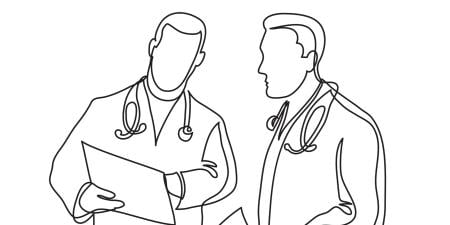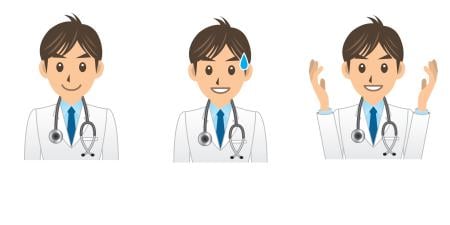Before any attempt to answer the question "Can you teach professionalism?" I think professionalism requires some form of definition. It is striking how many papers and essays deal with aspects of this question without any real definition of the term. Professionalism is more easily appreciated than defined. Michael LaCombe, writing on professionalism, said, "I knew a doctor once who was honest, but gentle with his honesty, and was loving, but careful with his love, who was disciplined without being rigid, and right without the stain of arrogance, who was self-questioning without self-doubt, introspective and reflective and in the same moment, decisive, who was strong, hard, adamant, but all these things laced with tenderness and understanding, a doctor who worshipped his calling without worshipping himself, who was busy beyond belief, but who had time—time to smile, to chat, to touch the shoulder and take the hand, and who had time enough for death as well as life. Now there was a professional."1 In a more formal way, some terms that have been employed to define professionalism are respect, competence, and empathy. Kenneth Ludmerer listed 3 characteristics of professionalism: "expert knowledge, self-regulation, and a fiduciary responsibility to place the needs of the client ahead of the self-interest of the practitioner."2 Though it will not be my main focus, I cannot help but comment on the question of why the issue of teaching professionalism has become such a "hot topic" in recent years. Perhaps it is because today serious barriers exist for the attainment of each of the 3 qualities of professionalism listed by Ludmerer.
The explosion of information and the ability to access the latest data coming from treatment trials and research laboratories, all very positive developments, challenge the age-old image of physicians as possessing expert knowledge. Many of our patients know more about their diseases than do their physicians; surely they know more about their illnesses. More importantly, there has been a steady erosion of the ability of the medical profession to regulate itself. Witness the recently enacted regulations limiting resident work hours;3 there are rumors that some training programs are monitoring the activities of residents during off-duty time. If these regulations, instituted in the name of reducing physician error, are implemented for physicians in training, what is to prevent another regulatory body from deciding that all physicians are susceptible to fatigue? Are we to be chastised if we devote too much time to the care of our patients? Most pernicious has been the intrusion of business strategies and ethics into the practice of medicine, seen so clearly in the acceptance of the concept of direct marketing of medical care, hospitals, medical treatments, and medications to patients. Is the striving for "cost containment and conservation of vital resources" easily reconciled with Ludmerer's "fiduciary responsibility"? And does the shift from the descriptive term "patients under my care" to "persons in my panel" not reflect a fundamental change in the nature of the relationship between patients and physicians?
Although I am more than a little disturbed by the barriers which have played a role in eroding the sense of professionalism among medical students and physicians, I would still answer the question "Can you teach professionalism?" in the same way that I have answered the question "Can you teach compassion?,"4 The question is not whether we can teach professionalism but rather whether we will teach professionalism or its opposite. By its opposite I mean the careful apportioning of time and resources to insure adequate financial return for investors in managed care entities or physician groups; compliance with policies designed to assure that physicians will not be overworked and to prevent any possibility that care might be subject to some omission which could result in a malpractice award; or the assumption that in giving reassurance the physician might be guilty of giving "false hope."
Clearly, medicine has a responsibility to its students and to its practitioners to teach professionalism. Again, although we may differ in our definitions, most of us, like Michael LaCombe, know professionalism when we see it. So how should we teach professionalism? I think that we have a time-honored tradition in medicine. Whether one looks back to the days when medicine was dominated by unproven theories and untested treatments or examines medical education in today's climate of scientifically based medicine, medical education has always rested on a blending of didactic teaching and mentoring. But this oversimplifies the solution. Ludmerer concluded that "attitudes are shaped by the totality of students' interactions with faculty, house officers, patients, hospital staff, and one another in laboratories, classrooms, wards and clinics."5 He went on to say, "The greatest challenge in improving the teaching of professionalism is to modify the internal culture of the academic health center so that it better reinforces the values that medical educators wish to impart."5
One aspect of the internal culture of the academic health center that is in need of repair is communication. Many of us, particularly those with gray or thinning hair, recall when hospitals served a "midnight meal" for residents who worked through the night. Though the fare consisted only of that day's leftovers, the midnight meal provided a fine opportunity to communicate with colleagues about many of the day's "medical leftovers." Today, hospitals do not serve a late night repast, and residents are usually too busy to have a meal with their colleagues. The challenge, today, is to identify and preserve, or recapture, the critical components of relationships in medicine, between colleagues and between physicians and patients, which we need to preserve.6 In the belief that creating a sanctioned time and place to encourage communication among medical students, residents, and attending physicians might foster and sustain some of the qualities we recognize as "professional," we established the Humanistic Aspects of Medical Education program at NYU School of Medicine 25 years ago. The meetings bring together students or residents who work closely together but often have no time to share their thoughts. Though the meetings take place at mid-day or early afternoon and the menu usually features cookies, carrots, or pizza, the content is remarkably similar to that which occupied the "midnight meals."
It may not be only the internal culture of the academic medical center that must be addressed. It seems to me that these times call for the academic community to be more forthright in confronting the commercial and governmental barriers that render professionals a threatened species.
References
-
LaCombe MA. On professionalism. Am J Med. 1993;94:329
- Ludmerer KM. Instilling professionalism in medical education. JAMA. 1999;282(9):881-882.
-
Accreditation Council for Graduate Medical Education (ACGME). Common program requirements. Accessed September 2, 2003.
-
Lowenstein J. Can you teach compassion? In: Lowenstein J. The Midnight Meal and other Essays about Doctors, Patients, and Medicine. New Haven and London: Yale University Press; 1997;12-19.
-
Ludmerer, 882.
-
Lowenstein J,1-2.



